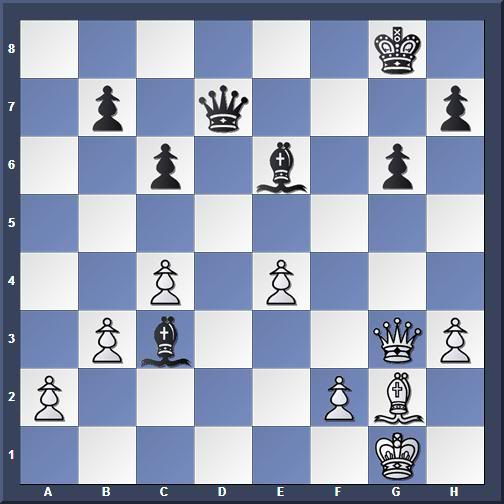If you think you have an advantage and then find you have not, that the position is really equal, the effect can be as bad as if you threw away a real advantage. The opponent who is more objective may be able to benefit from his clear-sightedness.
Tim Harding, Why You Lose at Chess*
In this past weekend's Eastern Washington Open, I played four games. Remarkably, I won three. In three games, I made an egregious blunder at a critical moment. Each blunder changed the game's evaluation.
I went from a winning to a losing position, twice, in the first game through blunders. I went from a winning to a drawing position in my best game of the event. I went from an even position, to one that was lost in the final game. Each blunder occurred in a positions where the correct move was relatively easy to find. Each blunder was a consequence of overconfidence.
Self-confidence is critical to competition. But, confidence in one's chances in any game must be tempered through objective analysis of the position. As one's opponent creates problems, and as these problems are solved, confidence grows. Often the position improves. A winning position still must be won. Accurate play requires continuous evaluation and calculation.
My first game was against a young player new to tournament chess. He had White and maintained the initiative quite some time into the game. After an inaccuracy, I trapped his bishop. Even so, he gained two pawns from the deal, and then snatched a third. He had a pawn that I could grab, but I sought to apply pressure that would cause his position to collapse. I was looking deeply into some maneuvers that I hoped would give me an overwhelming advantage, but I failed to see the threat of his last move.
29.Qg3 attacks my bishop
Black to move

I examined 29...Qd1+ followed by Qa1 or some other move designed to get the bishop and queen working together. Anticipating the eventual exchange of queens, I decided to activate my king.
29...Kg7?? 30.Qxc3+ and White has an overwhelming advantage.
A winning position is not a won game. The position, although hopelessly lost for me, still requires some technical skills from my opponent. I played on. He matched my errors with his own, and I was able trade queens in a way that gave me a superior pawn endgame.
Black to move

This position is winning for Black, but only one move here maintains this advantage. All others shift the advantage back to White. Almost without hesitation, I played 45...Kxe7, and my opponent answered with the winning move 46.Kg4+-.
He failed to find the winning idea: penetrating with his king along the h-file, so again I dodged a bullet.
After the correct 45...h5, I would have been able to win both e-pawns. Then with two to one on the kingside, my king would get to the queenside in time to create two connected passed pawns over there.
In round four, I played one of my best games ever. I went into an endgame that was clearly winning, and I played it relatively well. As my opponent's horse hopped around the board grabbing pawns, I forgot for a moment, the critical moment, how a bishop can dominate a knight.
White to move

56.g4?? does not look terrible, and Rybka 4 still gives White's position +1.75. Chess engines easily mislead, however. After this error, accurate play by Black can deprive White of all opportunities to make progress.
The simple 56.Be2 traps the knight, and the rest is elementary.
In the last round, I played the top seed. I was in a three-way tie for first and my opponent was one-half point behind. He let his opportunities to build up pressure dissipate, and I reached a point of relative equality. I began to cherish the fantasy that I could win this game.
Black to move

Several moves keep the position equal here. I considered 32...Qe8, and vaguely remember considering 32...Kf8. I rejected 32...h6 because driving the knight back brings White's bishop into battle. I played 32...Qxa4?? I saw 33.Qe7 Qe8 34.Qxf6 Qe3+ and reasoned that I would be trading knight for bishop. But, it does not work that way. White checkmates Black after 35...Qxd3.
A draw in the final game would have assured me second place in the tournament, shared with one other player if he won his game. A win in this game would have given me a tie for first in the event. The loss put me in a tie for third, and out of the money. With only one player over 2000, there were no Class A prizes.
I survived three of my blunders in this event. Next time, Caissa may not be so kind.
*Harding's quote is on page 84 of the Dover Publications second edition, 2001.













Hmmm, thought I commented on this one already.
ReplyDeleteDiagram one h5 is the move.
Diagram two Be2 is the move.
Diagram three I am looking at combination starting with black moves as h6 followed by Ngh5+, looks strong to me, maybe best you take a look at it and work it out.